

Non-Experimental Research: Overview & Advantages
In traditional experimental research, variables are carefully controlled by researchers in a lab setting. In non-experimental study, there are no variables the observer can directly control.

Non-Experimental Research
Non-experimental research gets its name from the fact that there is no independent variable involved in testing. Researchers instead look to take past events and re-examine them; analyzing them for new information and coming to new or supporting conclusions.
In traditional experimental research, variables are carefully controlled by researchers in a lab setting. In non-experimental study, there are no variables the observer can directly control. Instead, researchers are tasked with parsing through established context to come up with their own interpretation of the events. While non-experimental research is limited in use, there are a few key areas where a researcher may find using this kind of methodology is beneficial.
Characteristics of Non-Experimental Research
These key characteristics of non-experimental research set it apart from other common methods:
- The vast majority of these studies are conducted using prior events and past experiences.
- This method is not concerned with establishing links between variables.
- The research collected does not directly influence the events that are being studied.
- This type of testing does not influence or impact the phenomena being studied.
Types of Non-Experimental Research
There are three primary forms of non-experimental research. They are:
Single-Variable Research
Single-variable research involves locating one variable and attempting to discern new meaning from these events. Instead of trying to discern a relationship between two variables, this type of study aims to ganer a deeper understanding of a particular issue - often so that further testing can be completed.
One example of a single-variable research project could involve looking at how high the average person can jump. In this case, researchers would invite participants to make 3 attempts to jump up into the air as high as they could from a standing position; researchers would then average out the 3 attempts into one number. In this case, researchers are not looking to connect the variable jump height with any other piece of information. All the study is concerned about is measuring the average of an individual’s jumps.
Correlational and Quasi-Experimental
Correlational research involves measuring two or more variables of interest while maintaining little or no control over the variables themselves. In the quasi-experimental method, researchers change an independent variable - but will not recruit or control the participants involved in the experiment. An example would be a researcher who starts a campaign urging people to stop smoking in one city - and then comparing those results to cities without a no-smoking program.
Qualitative Research
The qualitative research method seeks to answer complex questions, and involves written documentation of experiences and events. Unlike the quantitative research method, which is concerned with facts and hard data, the qualitative method can be used to gather insights for a breadth of vital topics.
Advantages of Non-Experimental Research
Non-experimental designs can open a number of advantageous research opportunities. The benefits include:
- Non-experimental research can be used to analyze events that have happened in the past.
- The versatility of the model can be used to observe many unique phenomena.
- This method of research is far more affordable than the experimental kind.
Disadvantages of Non-Experimental Research
The limitations of non-experimental research are:
- These limited samples do not represent the larger population.
- The research can only be used to observe a single variable.
- Researcher bias or error in the methodology can lead to inaccurate results.
These disadvantages can be mitigated by applying the non-experimental method to the correct situations.

How it is different from experimental research
Experimental research often involves taking two or more variables (independent and dependent) and attempting to develop a causal relationship between them. Experimental designs will be tightly controlled by researchers, and the tests themselves will often be far more intricate and expansive than non-experimental ones.
When to use Non-Experimental Research
Non-experimental research is best suited for situations where you want to observe events that have already happened, or you are only interested in gathering information about one isolated variable. For instance, market research surveys are a common non-experimental tool used to gather insights about customer preferences, purchasing behaviors, or emerging trends.
Experimental designs are far more common in the fields of science—medicine, biology, psychology, and so forth. Non-experimental design often sees use in business, politics, history, and general academia. In the business field, a competitor survey can be a valuable non-experimental method to analyze and compare industry competitors, helping organizations refine their strategies and stay competitive.
Determining when you should use either experimental or non-experimental methods boil down to the purpose of your research.
If the situation calls for direct intervention, then experimental methods offer researchers more tools for changing and measuring independent variables.
The best place to use non-experimental research design is when the question at hand can be answered without altering the independent variable.
About Author

Send Your First Survey Today!
Set up and begin receiving results within minutes. Sign up for free, no contract required.
Helpfull is the easiest way to get feedback from thousands of people in minutes. Our online focus group platform provides a pool of qualified panelists to give you their real detailed opinions helping you make better, more informed decisions.
- Skip to main content
- Skip to primary sidebar
- Skip to footer
- QuestionPro

- Solutions Industries Gaming Automotive Sports and events Education Government Travel & Hospitality Financial Services Healthcare Cannabis Technology Use Case AskWhy Communities Audience Contactless surveys Mobile LivePolls Member Experience GDPR Positive People Science 360 Feedback Surveys
- Resources Blog eBooks Survey Templates Case Studies Training Help center
Home Market Research
Non-experimental research: What it is, overview & advantages

Non-experimental research is the type of research that lacks an independent variable. Instead, the researcher observes the context in which the phenomenon occurs and analyzes it to obtain information.
Unlike experimental research , where the variables are held constant, non-experimental research happens during the study when the researcher cannot control, manipulate or alter the subjects but relies on interpretation or observations to conclude.
This means that the method must not rely on correlations, surveys , or case studies and cannot demonstrate an actual cause and effect relationship.
Characteristics of non-experimental research
Some of the essential characteristics of non-experimental research are necessary for the final results. Let’s talk about them to identify the most critical parts of them.

- Most studies are based on events that occurred previously and are analyzed later.
- In this method, controlled experiments are not performed for reasons such as ethics or morality.
- No study samples are created; on the contrary, the samples or participants already exist and develop in their environment.
- The researcher does not intervene directly in the environment of the sample.
- This method studies the phenomena exactly as they occurred.
Types of non-experimental research
Non-experimental research can take the following forms:
Cross-sectional research : Cross-sectional research is used to observe and analyze the exact time of the research to cover various study groups or samples. This type of research is divided into:
- Descriptive: When values are observed where one or more variables are presented.
- Causal: It is responsible for explaining the reasons and relationship that exists between variables in a given time.
Longitudinal research: In a longitudinal study , researchers aim to analyze the changes and development of the relationships between variables over time. Longitudinal research can be divided into:
- Trend: When they study the changes faced by the study group in general.
- Group evolution: When the study group is a smaller sample.
- Panel: It is in charge of analyzing individual and group changes to discover the factor that produces them.
LEARN ABOUT: Quasi-experimental Research
When to use non-experimental research
Non-experimental research can be applied in the following ways:
- When the research question may be about one variable rather than a statistical relationship about two variables.
- There is a non-causal statistical relationship between variables in the research question.
- The research question has a causal research relationship, but the independent variable cannot be manipulated.
- In exploratory or broad research where a particular experience is confronted.
Advantages and disadvantages
Some advantages of non-experimental research are:
- It is very flexible during the research process
- The cause of the phenomenon is known, and the effect it has is investigated.
- The researcher can define the characteristics of the study group.
Among the disadvantages of non-experimental research are:
- The groups are not representative of the entire population.
- Errors in the methodology may occur, leading to research biases .
Non-experimental research is based on the observation of phenomena in their natural environment. In this way, they can be studied later to reach a conclusion.
Difference between experimental and non-experimental research
Experimental research involves changing variables and randomly assigning conditions to participants. As it can determine the cause, experimental research designs are used for research in medicine, biology, and social science.
Experimental research designs have strict standards for control and establishing validity. Although they may need many resources, they can lead to very interesting results.
Non-experimental research, on the other hand, is usually descriptive or correlational without any explicit changes done by the researcher. You simply describe the situation as it is, or describe a relationship between variables. Without any control, it is difficult to determine causal effects. The validity remains a concern in this type of research. However, it’s’ more regarding the measurements instead of the effects.
LEARN MORE: Descriptive Research vs Correlational Research
Whether you should choose experimental research or non-experimental research design depends on your goals and resources. If you need any help with how to conduct research and collect relevant data, or have queries regarding the best approach for your research goals, contact us today! You can create an account with our survey software and avail of 88+ features including dashboard and reporting for free.
Create a free account
MORE LIKE THIS

QuestionPro Workforce Has All The Feels – Release of the New Sentiment Analysis
Dec 19, 2024

The Impact Of Synthetic Data On Modern Research

Companies are losing $ billions with gaps in market research – are you?
Dec 18, 2024

CultureAmp vs Qualtrics: The Best Employee Experience Platform
Dec 16, 2024
Other categories
- Academic Research
- Artificial Intelligence
- Assessments
- Brand Awareness
- Case Studies
- Communities
- Consumer Insights
- Customer effort score
- Customer Engagement
- Customer Experience
- Customer Loyalty
- Customer Research
- Customer Satisfaction
- Employee Benefits
- Employee Engagement
- Employee Retention
- Friday Five
- General Data Protection Regulation
- Insights Hub
- Life@QuestionPro
- Market Research
- Mobile diaries
- Mobile Surveys
- New Features
- Online Communities
- Question Types
- Questionnaire
- QuestionPro Products
- Release Notes
- Research Tools and Apps
- Revenue at Risk
- Survey Templates
- Training Tips
- Tuesday CX Thoughts (TCXT)
- Uncategorized
- What’s Coming Up
- Workforce Intelligence
6.1 Overview of Non-Experimental Research
Learning objectives.
- Define non-experimental research, distinguish it clearly from experimental research, and give several examples.
- Explain when a researcher might choose to conduct non-experimental research as opposed to experimental research.
What Is Non-Experimental Research?
Non-experimental research is research that lacks the manipulation of an independent variable. Rather than manipulating an independent variable, researchers conducting non-experimental research simply measure variables as they naturally occur (in the lab or real world).
Most researchers in psychology consider the distinction between experimental and non-experimental research to be an extremely important one. This is because although experimental research can provide strong evidence that changes in an independent variable cause differences in a dependent variable, non-experimental research generally cannot. As we will see, however, this inability to make causal conclusions does not mean that non-experimental research is less important than experimental research.
When to Use Non-Experimental Research
As we saw in the last chapter , experimental research is appropriate when the researcher has a specific research question or hypothesis about a causal relationship between two variables—and it is possible, feasible, and ethical to manipulate the independent variable. It stands to reason, therefore, that non-experimental research is appropriate—even necessary—when these conditions are not met. There are many times in which non-experimental research is preferred, including when:
- the research question or hypothesis relates to a single variable rather than a statistical relationship between two variables (e.g., How accurate are people’s first impressions?).
- the research question pertains to a non-causal statistical relationship between variables (e.g., is there a correlation between verbal intelligence and mathematical intelligence?).
- the research question is about a causal relationship, but the independent variable cannot be manipulated or participants cannot be randomly assigned to conditions or orders of conditions for practical or ethical reasons (e.g., does damage to a person’s hippocampus impair the formation of long-term memory traces?).
- the research question is broad and exploratory, or is about what it is like to have a particular experience (e.g., what is it like to be a working mother diagnosed with depression?).
Again, the choice between the experimental and non-experimental approaches is generally dictated by the nature of the research question. Recall the three goals of science are to describe, to predict, and to explain. If the goal is to explain and the research question pertains to causal relationships, then the experimental approach is typically preferred. If the goal is to describe or to predict, a non-experimental approach will suffice. But the two approaches can also be used to address the same research question in complementary ways. For example, Similarly, after his original study, Milgram conducted experiments to explore the factors that affect obedience. He manipulated several independent variables, such as the distance between the experimenter and the participant, the participant and the confederate, and the location of the study (Milgram, 1974) [1] .
Types of Non-Experimental Research
Non-experimental research falls into three broad categories: cross-sectional research, correlational research, and observational research.
First, cross-sectional research involves comparing two or more pre-existing groups of people. What makes this approach non-experimental is that there is no manipulation of an independent variable and no random assignment of participants to groups. Imagine, for example, that a researcher administers the Rosenberg Self-Esteem Scale to 50 American college students and 50 Japanese college students. Although this “feels” like a between-subjects experiment, it is a cross-sectional study because the researcher did not manipulate the students’ nationalities. As another example, if we wanted to compare the memory test performance of a group of cannabis users with a group of non-users, this would be considered a cross-sectional study because for ethical and practical reasons we would not be able to randomly assign participants to the cannabis user and non-user groups. Rather we would need to compare these pre-existing groups which could introduce a selection bias (the groups may differ in other ways that affect their responses on the dependent variable). For instance, cannabis users are more likely to use more alcohol and other drugs and these differences may account for differences in the dependent variable across groups, rather than cannabis use per se.
Cross-sectional designs are commonly used by developmental psychologists who study aging and by researchers interested in sex differences. Using this design, developmental psychologists compare groups of people of different ages (e.g., young adults spanning from 18-25 years of age versus older adults spanning 60-75 years of age) on various dependent variables (e.g., memory, depression, life satisfaction). Of course, the primary limitation of using this design to study the effects of aging is that differences between the groups other than age may account for differences in the dependent variable. For instance, differences between the groups may reflect the generation that people come from (a cohort effect) rather than a direct effect of age. For this reason, longitudinal studies in which one group of people is followed as they age offer a superior means of studying the effects of aging. Once again, cross-sectional designs are also commonly used to study sex differences. Since researchers cannot practically or ethically manipulate the sex of their participants they must rely on cross-sectional designs to compare groups of men and women on different outcomes (e.g., verbal ability, substance use, depression). Using these designs researchers have discovered that men are more likely than women to suffer from substance abuse problems while women are more likely than men to suffer from depression. But, using this design it is unclear what is causing these differences. So, using this design it is unclear whether these differences are due to environmental factors like socialization or biological factors like hormones?
When researchers use a participant characteristic to create groups (nationality, cannabis use, age, sex), the independent variable is usually referred to as an experimenter-selected independent variable (as opposed to the experimenter-manipulated independent variables used in experimental research). Figure 6.1 shows data from a hypothetical study on the relationship between whether people make a daily list of things to do (a “to-do list”) and stress. Notice that it is unclear whether this is an experiment or a cross-sectional study because it is unclear whether the independent variable was manipulated by the researcher or simply selected by the researcher. If the researcher randomly assigned some participants to make daily to-do lists and others not to, then the independent variable was experimenter-manipulated and it is a true experiment. If the researcher simply asked participants whether they made daily to-do lists or not, then the independent variable it is experimenter-selected and the study is cross-sectional. The distinction is important because if the study was an experiment, then it could be concluded that making the daily to-do lists reduced participants’ stress. But if it was a cross-sectional study, it could only be concluded that these variables are statistically related. Perhaps being stressed has a negative effect on people’s ability to plan ahead. Or perhaps people who are more conscientious are more likely to make to-do lists and less likely to be stressed. The crucial point is that what defines a study as experimental or cross-sectional l is not the variables being studied, nor whether the variables are quantitative or categorical, nor the type of graph or statistics used to analyze the data. It is how the study is conducted.
Figure 6.1 Results of a Hypothetical Study on Whether People Who Make Daily To-Do Lists Experience Less Stress Than People Who Do Not Make Such Lists
Second, the most common type of non-experimental research conducted in Psychology is correlational research. Correlational research is considered non-experimental because it focuses on the statistical relationship between two variables but does not include the manipulation of an independent variable. More specifically, in correlational research , the researcher measures two continuous variables with little or no attempt to control extraneous variables and then assesses the relationship between them. As an example, a researcher interested in the relationship between self-esteem and school achievement could collect data on students’ self-esteem and their GPAs to see if the two variables are statistically related. Correlational research is very similar to cross-sectional research, and sometimes these terms are used interchangeably. The distinction that will be made in this book is that, rather than comparing two or more pre-existing groups of people as is done with cross-sectional research, correlational research involves correlating two continuous variables (groups are not formed and compared).
Third, observational research is non-experimental because it focuses on making observations of behavior in a natural or laboratory setting without manipulating anything. Milgram’s original obedience study was non-experimental in this way. He was primarily interested in the extent to which participants obeyed the researcher when he told them to shock the confederate and he observed all participants performing the same task under the same conditions. The study by Loftus and Pickrell described at the beginning of this chapter is also a good example of observational research. The variable was whether participants “remembered” having experienced mildly traumatic childhood events (e.g., getting lost in a shopping mall) that they had not actually experienced but that the researchers asked them about repeatedly. In this particular study, nearly a third of the participants “remembered” at least one event. (As with Milgram’s original study, this study inspired several later experiments on the factors that affect false memories.
The types of research we have discussed so far are all quantitative, referring to the fact that the data consist of numbers that are analyzed using statistical techniques. But as you will learn in this chapter, many observational research studies are more qualitative in nature. In qualitative research , the data are usually nonnumerical and therefore cannot be analyzed using statistical techniques. Rosenhan’s observational study of the experience of people in a psychiatric ward was primarily qualitative. The data were the notes taken by the “pseudopatients”—the people pretending to have heard voices—along with their hospital records. Rosenhan’s analysis consists mainly of a written description of the experiences of the pseudopatients, supported by several concrete examples. To illustrate the hospital staff’s tendency to “depersonalize” their patients, he noted, “Upon being admitted, I and other pseudopatients took the initial physical examinations in a semi-public room, where staff members went about their own business as if we were not there” (Rosenhan, 1973, p. 256) [2] . Qualitative data has a separate set of analysis tools depending on the research question. For example, thematic analysis would focus on themes that emerge in the data or conversation analysis would focus on the way the words were said in an interview or focus group.
Internal Validity Revisited
Recall that internal validity is the extent to which the design of a study supports the conclusion that changes in the independent variable caused any observed differences in the dependent variable. Figure 6.2 shows how experimental, quasi-experimental, and non-experimental (correlational) research vary in terms of internal validity. Experimental research tends to be highest in internal validity because the use of manipulation (of the independent variable) and control (of extraneous variables) help to rule out alternative explanations for the observed relationships. If the average score on the dependent variable in an experiment differs across conditions, it is quite likely that the independent variable is responsible for that difference. Non-experimental (correlational) research is lowest in internal validity because these designs fail to use manipulation or control. Quasi-experimental research (which will be described in more detail in a subsequent chapter) is in the middle because it contains some, but not all, of the features of a true experiment. For instance, it may fail to use random assignment to assign participants to groups or fail to use counterbalancing to control for potential order effects. Imagine, for example, that a researcher finds two similar schools, starts an anti-bullying program in one, and then finds fewer bullying incidents in that “treatment school” than in the “control school.” While a comparison is being made with a control condition, the lack of random assignment of children to schools could still mean that students in the treatment school differed from students in the control school in some other way that could explain the difference in bullying (e.g., there may be a selection effect).

Figure 6.2 Internal Validity of Correlation, Quasi-Experimental, and Experimental Studies. Experiments are generally high in internal validity, quasi-experiments lower, and correlation studies lower still.
Notice also in Figure 6.2 that there is some overlap in the internal validity of experiments, quasi-experiments, and correlational studies. For example, a poorly designed experiment that includes many confounding variables can be lower in internal validity than a well-designed quasi-experiment with no obvious confounding variables. Internal validity is also only one of several validities that one might consider, as noted in Chapter 5.
Key Takeaways
- Non-experimental research is research that lacks the manipulation of an independent variable.
- There are two broad types of non-experimental research. Correlational research that focuses on statistical relationships between variables that are measured but not manipulated, and observational research in which participants are observed and their behavior is recorded without the researcher interfering or manipulating any variables.
- In general, experimental research is high in internal validity, correlational research is low in internal validity, and quasi-experimental research is in between.
- A researcher conducts detailed interviews with unmarried teenage fathers to learn about how they feel and what they think about their role as fathers and summarizes their feelings in a written narrative.
- A researcher measures the impulsivity of a large sample of drivers and looks at the statistical relationship between this variable and the number of traffic tickets the drivers have received.
- A researcher randomly assigns patients with low back pain either to a treatment involving hypnosis or to a treatment involving exercise. She then measures their level of low back pain after 3 months.
- A college instructor gives weekly quizzes to students in one section of his course but no weekly quizzes to students in another section to see whether this has an effect on their test performance.
- Milgram, S. (1974). Obedience to authority: An experimental view . New York, NY: Harper & Row. ↵
- Rosenhan, D. L. (1973). On being sane in insane places. Science, 179 , 250–258. ↵

Share This Book
- Increase Font Size

Non-Experimental Studies in Research | Overview & Examples
Non-experimental studies are a vital and often overlooked part of research. In this article, we’ll explain the definition, types and characteristics of non-experimental studies as well as their advantages and disadvantages. Following this, we’ll go over some examples of non-experimental research across a range of different fields and provide some tips for undertaking these studies. Finally, we’ll explain how non-experimental studies can be combined with experimental studies to help strengthen your research.
Non-experimental studies are different from experimental studies in that they don’t involve manipulating variables. They don’t have a control group either. Instead, they rely on observation and analysis of existing data or natural events in an attempt to gain valuable insights into our understanding of the world.
Whether you’re a research student in psychology, sociology, education, or any other field, this article will give you a comprehensive overview of non-experimental studies and their role in research. So if you want to learn more about these critical research methods, keep reading!
Definition of Non-Experimental Studies
As mentioned before, non-experimental studies, also known as observational studies , are research methods that are used to observe and describe a phenomenon without manipulating a single variable. In other words, non-experimental studies don’t involve the controlled manipulation of an independent variable in order to see what effect it has on a dependent variable. On the contrary, non-experimental research relies on naturally occurring or existing data and do not involve any interventions from those undertaking the research.
Differences Between Experimental and Non-Experimental Studies
There are several critical differences between experimental and non-experimental studies that you ought to be aware of:
- Control : In experimental studies, the researcher has complete control over the independent variable and can manipulate it to study its effects on the dependent variable. In non-experimental research, the researcher doesn’t have control over the variables; they can only observe and describe them.
- Intervention : Experimental studies involve manipulating variables through some form of intervention, whether it be administering a treatment or altering a condition. Non-experimental studies, on the other hand, don’t involve any intervention. They simply describe the variables as they exist in their natural state.
- Cause and effect : Experimental studies are designed to establish cause and effect relationships between variables. Non-experimental studies cannot establish cause and effect because they don’t involve changing variables, so it would be impossible to pinpoint certain effects onto any one thing.
- Randomization : Experimental studies typically involve using randomization to assign subjects to treatment or control groups. Non-experimental research do not involve randomization .
- Sample size : Experimental studies typically involve smaller sample sizes because they are more controlled and require fewer subjects to establish statistical significance. Non-experimental studies often involve larger sample sizes because they do not involve the manipulation of variables and therefore require more subjects to observe and describe the phenomenon.
In short, non-experimental studies help describe and understand phenomena but are not as helpful in establishing cause and effect relationships. However, non-experimental studies can be combined with experimental studies to provide a more comprehensive understanding of a phenomenon.
Types of Non-Experimental Studies
Researchers can use several types of non-experimental studies to investigate a research question or phenomenon. These include descriptive studies, correlational studies, and case studies.
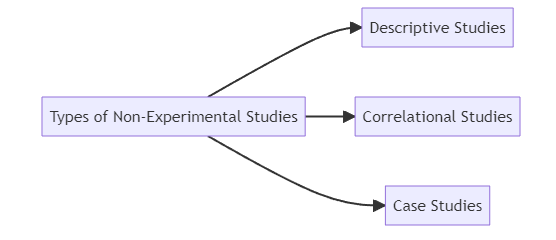
1. Descriptive Studies
Descriptive studies are used to describe the characteristics of a group or population. These studies are often used to identify patterns or trends in a particular phenomenon. Researchers typically use survey methods or observational techniques to gather data in descriptive studies.
Examples of descriptive studies include surveys, observational studies, and demographic studies.
2. Correlational Studies
Correlational studies investigate the relationship between two or more variables. These studies do not seek to manipulate variables or determine cause and effect but rather explore whether there is a correlation between the variables being studied.
Researchers typically use statistical techniques to analyze data collected in correlational studies.
Examples of correlational studies include studies that investigate the causal relationship between exercise and mental health or the statistical relationship between social media use and academic performance.
3. Case Studies
Case studies involve an in-depth examination of a single individual, group, or event. These studies are often used to explore complex phenomena or to provide insight into a specific situation or context. Researchers typically use various methods to collect data in case studies, including interviews, observations, and document analysis.
Examples of case studies include studies that investigate the experiences of a single individual with a particular medical condition or the cultural dynamics of a small community.
Non-experimental studies provide valuable information and offer unique insights into a research question or phenomenon. While they have their limitations, they can be an essential part of the research process and can be used in combination with experimental studies to provide a more complete understanding of a topic.
Advantages of Non-Experimental Studies
Non-experimental studies have several advantages that make them useful for certain types of research. Some of the main benefits of non-experimental studies include:
- Greater flexibility : Non-experimental studies are often more flexible than experimental studies, as they do not require the researcher to manipulate variables or control for extraneous factors. This means that researchers can more easily adapt their methods to changing circumstances or unexpected results.
- Greater realism : Non-experimental studies often provide a more realistic and naturalistic portrayal of the research setting, as they do not involve the artificial manipulation of extraneous variables. This can make the results of non-experimental studies more generalizable to real-world situations.
- Greater cost-effectiveness : Non-experimental studies are generally less expensive than experimental studies, as they do not require specialized equipment or procedures. This makes non-experimental studies a more cost-effective option for researchers on a budget.
Disadvantages of Non-Experimental Studies
Despite their advantages, non-experimental research also has several limitations that should be considered when deciding whether to use this type of study in research. Some of these include:
- Lack of control over variables : One of the main limitations of non-experimental studies is the lack of control over variables. Researchers cannot manipulate variables or control for extraneous factors, so it is more difficult to establish cause and effect relationships.
- Limited generalizability : They often have limited generalizability, as they are conducted in a specific context or population. This means that the results of non-experimental studies may not be applicable to other populations or settings.
- Difficulty measuring change : Non-experimental studies are typically conducted at a single point in time, which makes it difficult to measure change over time. This can be a problem if the research question examines changes in behaviour or attitudes over time.
- Potential bias : Non-experimental studies are prone to bias, as the researcher cannot control all factors that may affect the results. This means that the results of non-experimental studies may be influenced by factors not accounted for in the study design.
Examples of Non-Experimental Studies in Different Fields
- Case studies : These are in-depth studies of a single individual or small group, often used to explore rare or unusual phenomena. For example, a case study of a person with a rare neurological disorder can provide insight into the symptoms and treatment options for that disorder.
- Surveys : Surveys involve collecting data from a large number of people using self-report measures such as questionnaires or interviews. Surveys can be used to study various topics, from attitudes and beliefs to behaviours and experiences. For example, a survey of college students’ attitudes towards mental health treatment could provide valuable information for addressing the needs of this population.
- Observational studies : Observational studies involve watching and recording the behaviour of people or animals in a natural setting. These studies can help understand social interactions and other complex behaviours. For example, an observational study of parenting styles in different cultures could provide insight into how parenting practices affect child development.
- Ethnographies : Ethnographies involve detailed observations and interviews with members of a particular culture or community. They are often used to understand social norms, values, and beliefs in a specific group. For example, an ethnography of a rural community might examine how traditional gender roles are maintained and how they affect the lives of men and women in that community.
- Content analysis : This involves systematically analyzing written or spoken texts (such as books, newspapers, or social media posts) to understand patterns or themes within a particular culture or society. For example, a content analysis of news articles about immigration might reveal underlying biases or stereotypes about immigrants.
- Longitudinal studies : These are studies that follow the same group of people over an extended period of time. They can be used to understand how social or environmental factors affect people’s lives over time. For example, a longitudinal study of first-generation college students might examine how family and community support, financial stress, and other factors impact their academic success.
- Action research : This involves researchers actively collaborating with teachers and students in a particular educational setting to identify problems and develop solutions. Action research can be useful for understanding and improving teaching and learning practices. For example, an action research project might involve a teacher working with researchers to design and implement a new teaching method and then evaluating the results to see if it was successful.
- Narrative inquiry : This involves collecting and analyzing stories or narratives from individuals or groups to understand their experiences and perspectives. Narrative inquiry is often used in education to understand how students learn and how teachers teach. For example, a narrative inquiry study of high school students’ experiences with bullying might help educators understand the impact of bullying on academic performance and mental health.
- Ethnographic case studies : These are in-depth studies of a particular school or classroom that use observations, interviews, and other data collection methods to understand the social and cultural factors that shape the educational experience. Ethnographic case studies can provide valuable insights into how education policies and practices affect students and teachers. For example, an ethnographic case study of a bilingual classroom might explore how language acquisition and cultural differences impact students’ learning.

How to Conduct Non-Experimental Studies: Tips and Best Practices
Conducting a non-experimental study can be a challenging task for research students. However, with proper planning and execution, it is possible to produce high-quality research using this method. Here are some tips and best practices for conducting a non-experimental study:
1. Planning and Designing the Study
- Identify the research question and objectives : Clearly define your study’s research question and objectives. This will help you focus on the specific aspects of the research that you want to explore.
- Determine the study sample size and sampling method : Consider the size and characteristics of the sample you need to answer your research question accurately. Choose a sampling method that is appropriate for your study and ensures that the sample is representative of the population. This will help make sure your findings will be backed by strong evidence.
- Consider the limitations of the study : Be aware of the limitations of your study, including any biases or confounding variables that may affect the results. Consider how you can address these limitations in your original study design.
- Develop a research plan : Create a detailed research plan outlining the steps you will take to conduct the study. This will help you stay organized and on track throughout the research process.
2. Data Collection and Analysis
- Choose appropriate data collection methods : Select data collection methods appropriate for your research question and study design. This could include surveys, interviews, observations, or existing data sources.
- Ensure the validity and reliability of data collection methods : Ensure that the data collection methods you use are valid and reliable. Validity refers to whether the data accurately measures what it is intended to measure. Reliability refers to the consistency of the results.
- Use appropriate data analysis techniques : Choose data analysis techniques appropriate for the type of data you have collected and the research question you are trying to answer. This could include descriptive statistics, correlation analysis, or regression analysis.
3. Interpreting and Reporting Results
- Interpret the results accurately: Carefully interpret the results of your study, keeping in mind the study’s limitations and possible biases or confounding variables .
- Report the results clearly and concisely : Present the results of your study clearly and concisely, using appropriate graphs, tables, and statistical analyses to illustrate the findings.
- Conclusion: Summarize the main findings and implications of the study : In the conclusion, summarize the study’s main findings and discuss their implications for the research field. Consider how the results of the study contribute to the existing body of knowledge and identify any areas for future research.
How to Use Non-Experimental Studies in Combination with Experimental Studies
There are two main ways to combine non-experimental studies with experimental studies: triangulation and meta-analysis.
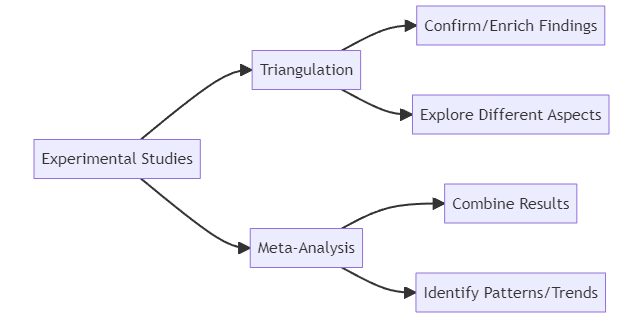
Triangulation
Triangulation is the use of multiple methods, data sources, or perspectives in a study to increase the validity of the results. This can include combining experimental and non-experimental studies.
For example, a researcher may conduct an experimental study to test a specific hypothesis and then follow it up with a non-experimental study using a different method, such as a survey or case study, to provide additional support for the results.
Using triangulation allows researchers to confirm or enrich the findings from one method with the findings from another method. It also allows researchers to explore different aspects of a research question and address a single method’s potential limitations.
Meta-Analysis
Meta-analysis is a statistical method that combines the results from multiple studies to provide a more precise estimate of the effect size. This is particularly useful when the analysed studies have different designs, such as experimental and non-experimental studies.
Meta-analysis allows researchers to combine the results from multiple studies and to identify patterns and trends that may not be apparent in individual studies. It also allows researchers to account for differences in study design, sample size, and other factors that may affect the results.
However, it’s important to note that meta-analysis is only appropriate when the studies being analyzed are sufficiently similar and when the data can be combined in a meaningful way.
Conclusion: The Role of Non-Experimental Studies in Research
Non-experimental studies are an essential and valuable tool in research. They allow researchers to explore complex phenomena and relationships in natural settings, examine individual cases in depth, and study a variety of contexts and perspectives.
While non-experimental studies may not have the same level of control as experimental studies, they can provide valuable insights and can be used in combination with experimental studies to increase the validity and generalizability of research findings.
In conclusion, non-experimental studies have a valuable role in research and should be considered a viable option for addressing research questions.

Understanding Control Groups in Research Studies

What Are Academic Journals? | A Comprehensive Guide
Related posts.

Using Meta-Ethnography in Qualitative Research: Techniques and Examples

How to Conduct Q Methodology in Qualitative Research: Techniques and Examples

What is Exploratory Factor Analysis? | A Beginners Guide

The Constant Comparative Method | Explanation and Examples
Type above and press Enter to search. Press Esc to cancel.

Up to 65% off on all yearly plans! 🎁 Start fresh with a yearly plan. Now 65% off! ❄️ 🏷️
- Form Builder
- Survey Maker
- AI Form Generator
- AI Survey Tool
- AI Quiz Maker
- Store Builder
- WordPress Plugin
HubSpot CRM
Google Sheets
Google Analytics
Microsoft Excel
- Popular Forms
- Job Application Form Template
- Rental Application Form Template
- Hotel Accommodation Form Template
- Online Registration Form Template
- Employment Application Form Template
- Application Forms
- Booking Forms
- Consent Forms
- Contact Forms
- Donation Forms
- Customer Satisfaction Surveys
- Employee Satisfaction Surveys
- Evaluation Surveys
- Feedback Surveys
- Market Research Surveys
- Personality Quiz Template
- Geography Quiz Template
- Math Quiz Template
- Science Quiz Template
- Vocabulary Quiz Template
Try without registration Quick Start
Read engaging stories, how-to guides, learn about forms.app features.
Inspirational ready-to-use templates for getting started fast and powerful.
Spot-on guides on how to use forms.app and make the most out of it.
See the technical measures we take and learn how we keep your data safe and secure.
- Integrations
- Help Center
- Sign In Sign Up Free
- What is non-experimental research: Definition, types & examples
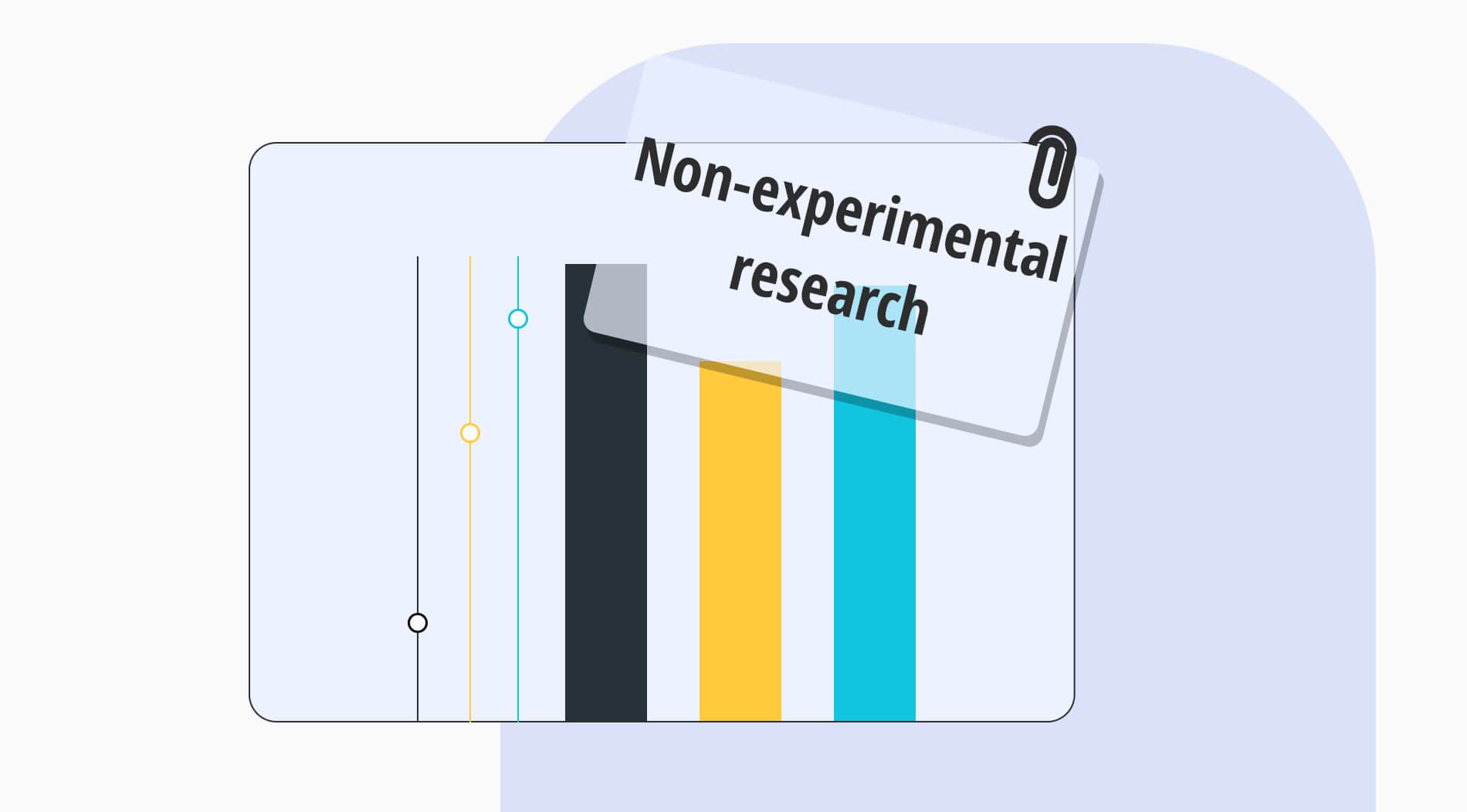
Defne Çobanoğlu
The experimentation method is very useful for getting information on a specific subject. However, when experimenting is not possible or practical, there is another way of collecting data for those interested. It's a non-experimental way, to say the least.
In this article, we have gathered information on non-experimental research, clearly defined what it is and when one should use it, and listed the types of non-experimental research. We also gave some useful examples to paint a better picture. Let us get started.
- What is non-experimental research?
Non-experimental research is a type of research design that is based on observation and measuring instead of experimentation with randomly assigned participants.
What characterizes this research design is the fact that it lacks the manipulation of independent variables . Because of this fact, the non-experimental research is based on naturally occurring conditions, and there is no involvement of external interventions. Therefore, the researchers doing this method must not rely heavily on interviews, surveys , or case studies.
- When to use non-experimental research?
An experiment is done when a researcher is investigating the relationship between one or two phenomena and has a theory or hypothesis on the relationship between two variables that are involved. The researcher can carry out an experiment when it is ethical, possible, and feasible to do one.
However, when an experiment can not be done because of a limitation, then they decide to opt for a non-experimental research design . Non-experimental research is considered preferable in some conditions, including:
- When the manipulation of the independent variable is not possible because of ethical or practical concerns
- When the subjects of an experimental design can not be randomly assigned to treatments.
- When the research question is too extensive or it relates to a general experience.
- When researchers want to do a starter research before investing in more extensive research.
- When the research question is about the statistical relationship between variables , but in a noncausal context.
- Characteristics of non-experimental research
Non-experimental research has some characteristics that clearly define the framework of this research method. They provide a clear distinction between experimental design and non-experimental design. Let us see some of them:
- Non-experimental research does not involve the manipulation of variables .
- The aim of this research type is to explore the factors as they naturally occur .
- This method is used when experimentation is not possible because of ethical or practical reasons .
- Instead of creating a sample or participant group, the existing groups or natural thresholds are used during the research.
- This research method is not about finding causality between two variables.
- Most studies are done on past events or historical occurrences to make sense of specific research questions.
- Types of non-experimental research
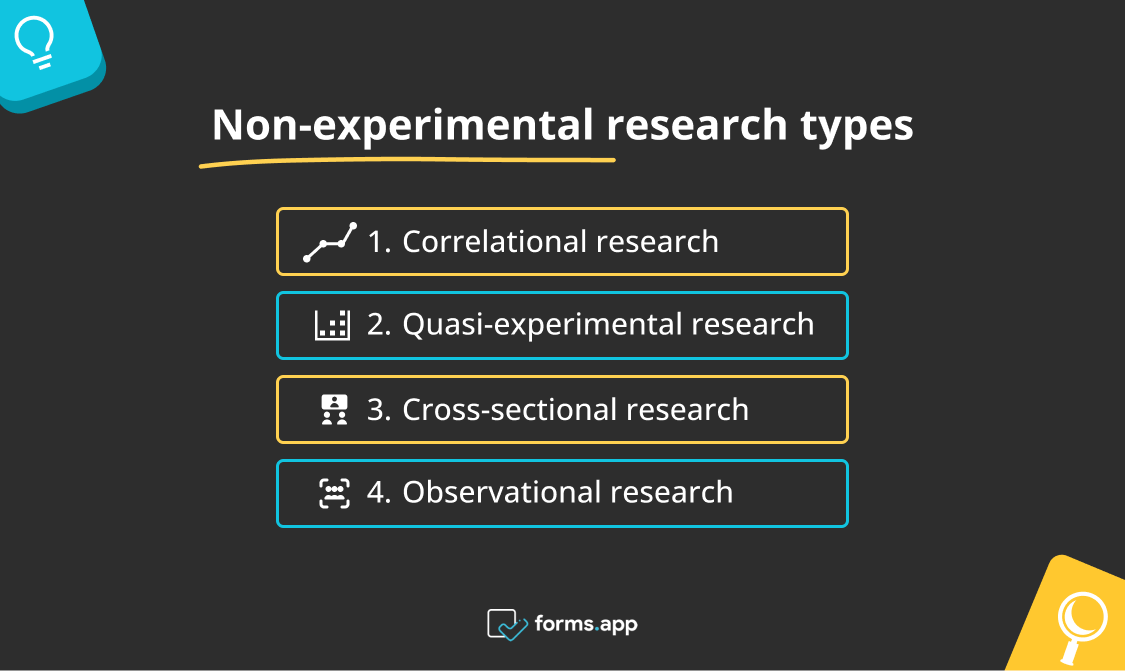
Non-experimental research types
What makes research non-experimental research is the fact that the researcher does not manipulate the factors, does not randomly assign the participants, and observes the existing groups. But this research method can also be divided into different types. These types are:
Correlational research:
In correlation studies, the researcher does not manipulate the variables and is not interested in controlling the extraneous variables. They only observe and assess the relationship between them. For example, a researcher examines students’ study hours every day and their overall academic performance. The positive correlation this between study hours and academic performance suggests a statistical association.
Quasi-experimental research:
In quasi-experimental research, the researcher does not randomly assign the participants into two groups. Because you can not deliberately deprive someone of treatment, the researcher uses natural thresholds or dividing points . For example, examining students from two different high schools with different education methods.
Cross-sectional research:
In cross-sectional research, the researcher studies and compares a portion of a population at the same time . It does not involve random assignment or any outside manipulation. For example, a study on smokers and non-smokers in a specific area.
Observational research:
In observational research, the researcher once again does not manipulate any aspect of the study, and their main focus is observation of the participants . For example, a researcher examining a group of children playing in a playground would be a good example.
- Non-experimental research examples
Non-experimental research is a good way of collecting information and exploring relationships between variables. It can be used in numerous fields, from social sciences, economics, psychology, education, and market research. When gathering information using secondary research is not enough and an experiment can not be done, this method can bring out new information.
Non-experimental research example #1
Imagine a researcher who wants to see the connection between mobile phone usage before bedtime and the amount of sleep adults get in a night . They can gather a group of individuals to observe and present them with some questions asking about the details of their day, frequency and duration of phone usage, quality of sleep, etc . And observe them by analyzing the findings.
Non-experimental research example #2
Imagine a researcher who wants to explore the correlation between job satisfaction levels among employees and what are the factors that affect this . The researcher can gather all the information they get about the employees’ ages, sexes, positions in the company, working patterns, demographic information, etc .
The research provides the researcher with all the information to make an analysis to identify correlations and patterns. Then, it is possible for researchers and administrators to make informed predictions.
- Frequently asked questions about non-experimental research
When not to use non-experimental research?
There are some situations where non-experimental research is not suitable or the best choice. For example, the aim of non-experimental research is not about finding causality therefore, if the researcher wants to explore the relationship between two variables, then this method is not for them. Also, if the control over the variables is extremely important to the test of a theory, then experimentation is a more appropriate option.
What is the difference between experimental and non-experimental research?
Experimental research is an example of primary research where the researcher takes control of all the variables, randomly assigns the participants into different groups, and studies them in a pre-determined environment to test a hypothesis.
On the contrary, non-experimental research does not intervene in any way and only observes and studies the participants in their natural environments to make sense of a phenomenon
What makes a quasi-experiment a non-experiment?
The same as true experimentation, quasi-experiment research also aims to explore a cause-and-effect relationship between independent and dependent variables. However, in quasi-experimental research, the participants are not randomly selected. They are assigned to groups based on non-random criteria .
Is a survey a non-experimental study?
Yes, as the main purpose of a survey or questionnaire is to collect information from participants without outside interference, it makes the survey a non-experimental study. Surveys are used by researchers when experimentation is not possible because of ethical reasons, but first-hand data is needed
What is non-experimental data?
Non-experimental data is data collected by researchers via using non-experimental methods such as observations, interpretation, and interactions. Non-experimental data could both be qualitative or quantitative, depending on the situation.
Advantages of non-experimental research
Non-experimental research has its positive sides that a researcher should have in mind when going through a study. They can start their research by going through the advantages. These advantages are:
- It is used to observe and analyze past events .
- This method is more affordable than a true experiment .
- As the researcher can adapt the methods during the study, this research type is more flexible than an experimental study.
- This method allows the researchers to answer specific questions .
Disadvantages of non-experimental research
Even though non-experimental research has its advantages, it also has some disadvantages a researcher should be mindful of. Here are some of them:
- The findings of non-experimental research can not be generalized to the whole population. Therefore, it has low external validity .
- This research is used to explore only a single variable .
- Non-experimental research designs are prone to researcher bias and may not produce neutral results.
- Final words
A non-experimental study differs from an experimental study in that there is no intervention or change of internal or extraneous elements. It is a smart way to collect information without the limitations of experimentation. These limitations could be about ethical or practical problems. When you can not do proper experimentation, your other option is to study existing conditions and groups to draw conclusions. This is a non-experimental design .
In this article, we have gathered information on non-experimental research to shed light on the details of this research method. If you are thinking of doing a study, make sure to have this information in mind. And lastly, do not forget to visit our articles on other research methods and so much more!
Defne is a content writer at forms.app. She is also a translator specializing in literary translation. Defne loves reading, writing, and translating professionally and as a hobby. Her expertise lies in survey research, research methodologies, content writing, and translation.
- Form Features
- Data Collection
Table of Contents
Related posts.
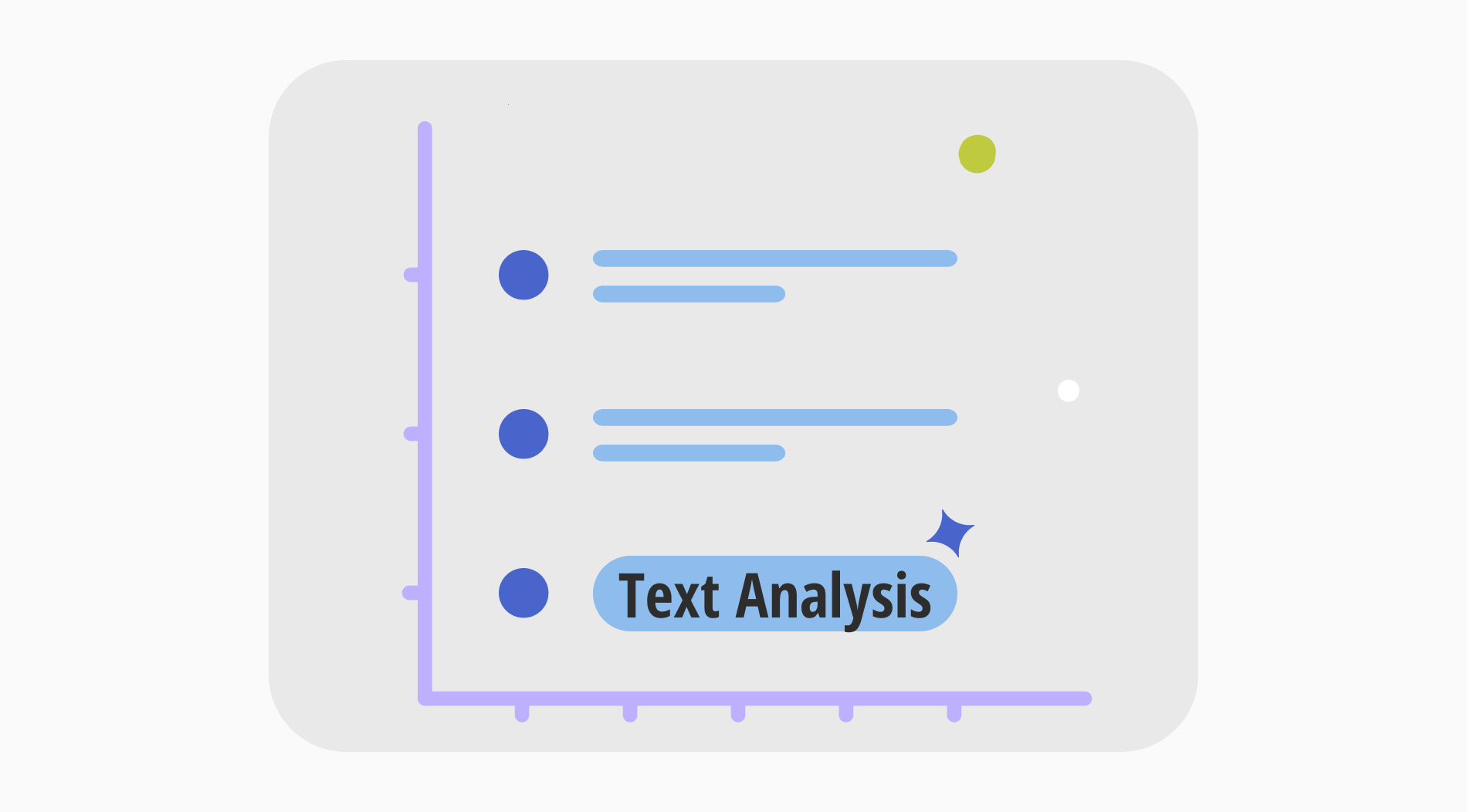
A full guide to the Text Analysis

50+ Job interview statistics to get ideas
Fatih Özkan

6 ways to improve employee satisfaction in your company
Mehdi Hussen
- Voxco Online
- Voxco Panel Management
- Voxco Panel Portal
- Voxco Audience
- Voxco Mobile Offline
- Voxco Dialer Cloud
- Voxco Dialer On-premise
- Voxco TCPA Connect
- Voxco Analytics
- Voxco Text & Sentiment Analysis

- 40+ question types
- Drag-and-drop interface
- Skip logic and branching
- Multi-lingual survey
- Text piping
- Question library
- CSS customization
- White-label surveys
- Customizable ‘Thank You’ page
- Customizable survey theme
- Reminder send-outs
- Survey rewards
- Social media
- Website surveys
- Correlation analysis
- Cross-tabulation analysis
- Trend analysis
- Real-time dashboard
- Customizable report
- Email address validation
- Recaptcha validation
- SSL security
Take a peek at our powerful survey features to design surveys that scale discoveries.
Download feature sheet.
- Hospitality
- Academic Research
- Customer Experience
- Employee Experience
- Product Experience
- Market Research
- Social Research
- Data Analysis
Explore Voxco
Need to map Voxco’s features & offerings? We can help!
Watch a Demo
Download Brochures
Get a Quote
- NPS Calculator
- CES Calculator
- A/B Testing Calculator
- Margin of Error Calculator
- Sample Size Calculator
- CX Strategy & Management Hub
- Market Research Hub
- Patient Experience Hub
- Employee Experience Hub
- NPS Knowledge Hub
- Market Research Guide
- Customer Experience Guide
- Survey Research Guides
- Survey Template Library
- Webinars and Events
- Feature Sheets
- Try a sample survey
- Professional Services

Get exclusive insights into research trends and best practices from top experts! Access Voxco’s ‘State of Research Report 2024 edition’ .
We’ve been avid users of the Voxco platform now for over 20 years. It gives us the flexibility to routinely enhance our survey toolkit and provides our clients with a more robust dataset and story to tell their clients.
VP Innovation & Strategic Partnerships, The Logit Group
- Client Stories
- Voxco Reviews
- Why Voxco Research?
- Careers at Voxco
- Vulnerabilities and Ethical Hacking
Explore Regional Offices
- Survey Software The world’s leading omnichannel survey software
- Online Survey Tools Create sophisticated surveys with ease.
- Mobile Offline Conduct efficient field surveys.
- Text Analysis
- Close The Loop
- Automated Translations
- NPS Dashboard
- CATI Manage high volume phone surveys efficiently
- Cloud/On-premise Dialer TCPA compliant Cloud on-premise dialer
- IVR Survey Software Boost productivity with automated call workflows.
- Analytics Analyze survey data with visual dashboards
- Panel Manager Nurture a loyal community of respondents.
- Survey Portal Best-in-class user friendly survey portal.
- Voxco Audience Conduct targeted sample research in hours.
- Predictive Analytics
- Customer 360
- Customer Loyalty
- Fraud & Risk Management
- AI/ML Enablement Services
- Credit Underwriting

Find the best survey software for you! (Along with a checklist to compare platforms)
Get Buyer’s Guide
- 100+ question types
- SMS surveys
- Financial Services
- Banking & Financial Services
- Retail Solution
- Risk Management
- Customer Lifecycle Solutions
- Net Promoter Score
- Customer Behaviour Analytics
- Customer Segmentation
- Data Unification
Explore Voxco
Watch a Demo
Download Brochures
- CX Strategy & Management Hub
- The Voxco Guide to Customer Experience
- Professional services
- Blogs & White papers
- Case Studies
Find the best customer experience platform
Uncover customer pain points, analyze feedback and run successful CX programs with the best CX platform for your team.
Get the Guide Now

VP Innovation & Strategic Partnerships, The Logit Group
- Why Voxco Intelligence?
- Our clients
- Client stories
- Featuresheets

Non-experimental design
SHARE THE ARTICLE ON
What is non-experimental design?
While working with non-experimental design, researchers do not evaluate the independent variable . So what do we understand from this? It is clearly a major difference between the experimental design and non-experimental design. Meaning, unlike the experimental research design, non-experimental design does not progress on the grounds of independent variables, dependent variables or their cause-effect relationships.
The non-experimental study totally depends on the variables that are out of the scope of the researcher’s control. They cannot control, manipulate or alter the subjects by any means. So that leaves them with just keep observing and interpreting their subjects along the research.
Hence, it will be safe to say that the researchers use non-experimental research design when they do not have any particular cause-effect research problem at hand and they just want to understand a topic in depth without bounding it with variables. They study the matter naturally as they occur.
See Voxco survey software in action with a Free demo.
Difference between experimental design and non-experimental design?
Just to make it more clear how both the methods are different from each other, let us take a look at a tabular representation to understand it more neatly:
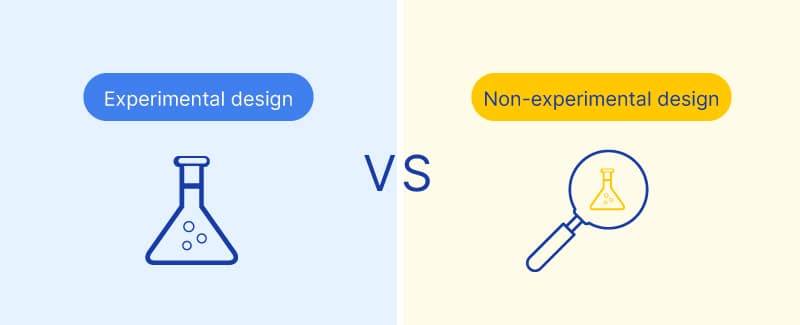
Given the differences, your research question will tell you which approach to use. If you have to explain the relationship between two things in your research question, then experimental design is more suitable. But if you have to predict or explain something deeply, then go for non-experimental design.
Although, both of the approaches can be used for the same research question, if the problem looks something like “a researcher wants to know “what are the factors from today’s educational system that affects the children not being able to ace their practical lives as well.” A researcher may want to compare two variables and study their cause-effect relationships. Or the researcher may want to just observe those factors and how they affect the children in their natural environment.

When to use the non-experimental design?
Want to know the right time to use a non-experimental design? Here are some factors that will hint you to better turn to a non-experimental research design:
- When the research question is just about exploring one variable and not anything about the relationship between two variables.
- When the variables (provided there are more than one) in the research question do not have any cause-effect relationships.
- When there is a cause-effect relationship but the independent variable is out of manipulation or the participants cannot be assigned randomly.
- When the research question is focused more on how it is like to have a particular experience.
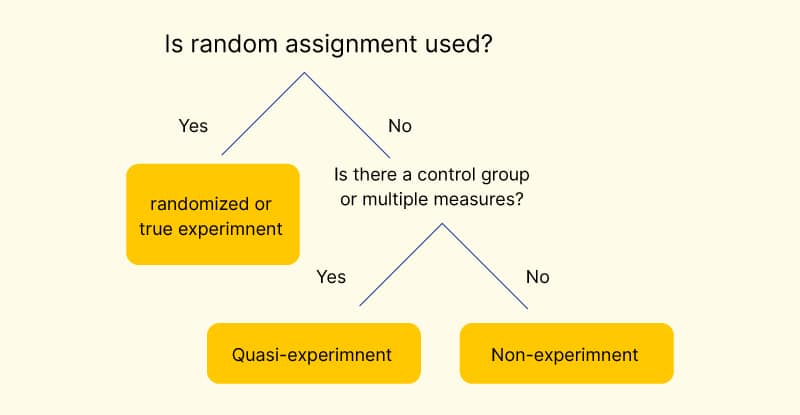
What are the examples of non-experimental design?
Based on the above scenarios, let us look at some examples for each of them:
Example 1: How practical is the current education system?
Here, you just have one variable “current education system” and you have to understand it to determine how practical it is for the kids.
Example 2: Is there a relationship between the current education system and children’s ability to deal with the practicality of life?
As you can see, there exist two variables, BUT the research questions are not concerning how either one of them affects the other.
Example 3: Does a dyslexic child find it hard to deal with its practical life?
Here, there are both independent and dependent variables, but neither can we manipulate the independent variable (a dyslexic child), nor can we assign random children to the experiment.
Example 4: What is it like to be a dyslexic child in the current education system?
Here, the researcher is only concerned about what a dyslexic child feels and goes through while adjusting to the currently fast running education system.
Types of non-experimental design
There are three types of non-experimental design, namely:
Cross-sectional research
It studies the experiment by comparing two already existing groups. This comparison is done at the same time. As it is a non-experimental design, it does not involve the manipulation of independent variables and does not assign participants randomly.
Example: we want to compare the IQs of students who scored below 60% in exams with those who scored more than 60%. We will start the study on both of them at the same time. Also, we cannot randomly assign the students to their respective groups. Also, we will not consider changing the independent variable as we just want to get to know their IQs.
Cross-sectional research can be further divided into:
Descriptive- observation of values in presence of one or more variables.
Causal- to explain the relationship between the existing various variables.
Correlational research
It is the most commonly used type of non-experimental design in the psychology field. It majorly focuses on the statistical relationships between variables and does not manipulate the independent variable. The researchers try to study the variables without controlling them and result in the relationship between them.
Example: a researcher is interested in the relationship between a student’s reading habits and their concentration. This will need the researcher to gather the details about the reading habits among students and their ability to concentrate on a certain thing. This doesn’t involve manipulating any of the variables but just observing them and getting to the results.
Both correlation research can be used in exchange for the cross-sectional research, but the difference is cross-section compares two pre-existing groups, whereas correlational research compares two continuous variables and no groups.
Observational research
It focuses on observing the behaviour of the subject in its natural or laboratory setting. And obviously, it does not manipulate the variables as it just observes them.
Example: a doctor observes the patient after his surgery.
In this case, the doctor does not perform any medications or operations on the patient while in the observation phase. As most of the observational studies are qualitative, they are descriptive.
Explore all the survey question types possible on Voxco
Advantages and disadvantages of non-experimental design?
Advantages:.
Let us look at some characteristics of non-experimental design which makes it the best choice when it comes to researching (obviously only after looking out for the above factors);
- It helps when the studies happen in the past, but they are analysed later.
- The main factors that should be considered during carrying out any experiments are ethics and morals. The on-experimental approach takes both of them into consideration.
- There is no need to generate samples for the population as the participants grow and develop in their environments.
- The researchers cannot control the experiment variables.
- This study progresses as the experiment occurs naturally.
Disadvantages:
All that being said, let us look at some of the cons of non-experimental design;
- The groups may not be representing the entire population.
- Biases can happen due to errors in methodology.
Explore Voxco Survey Software
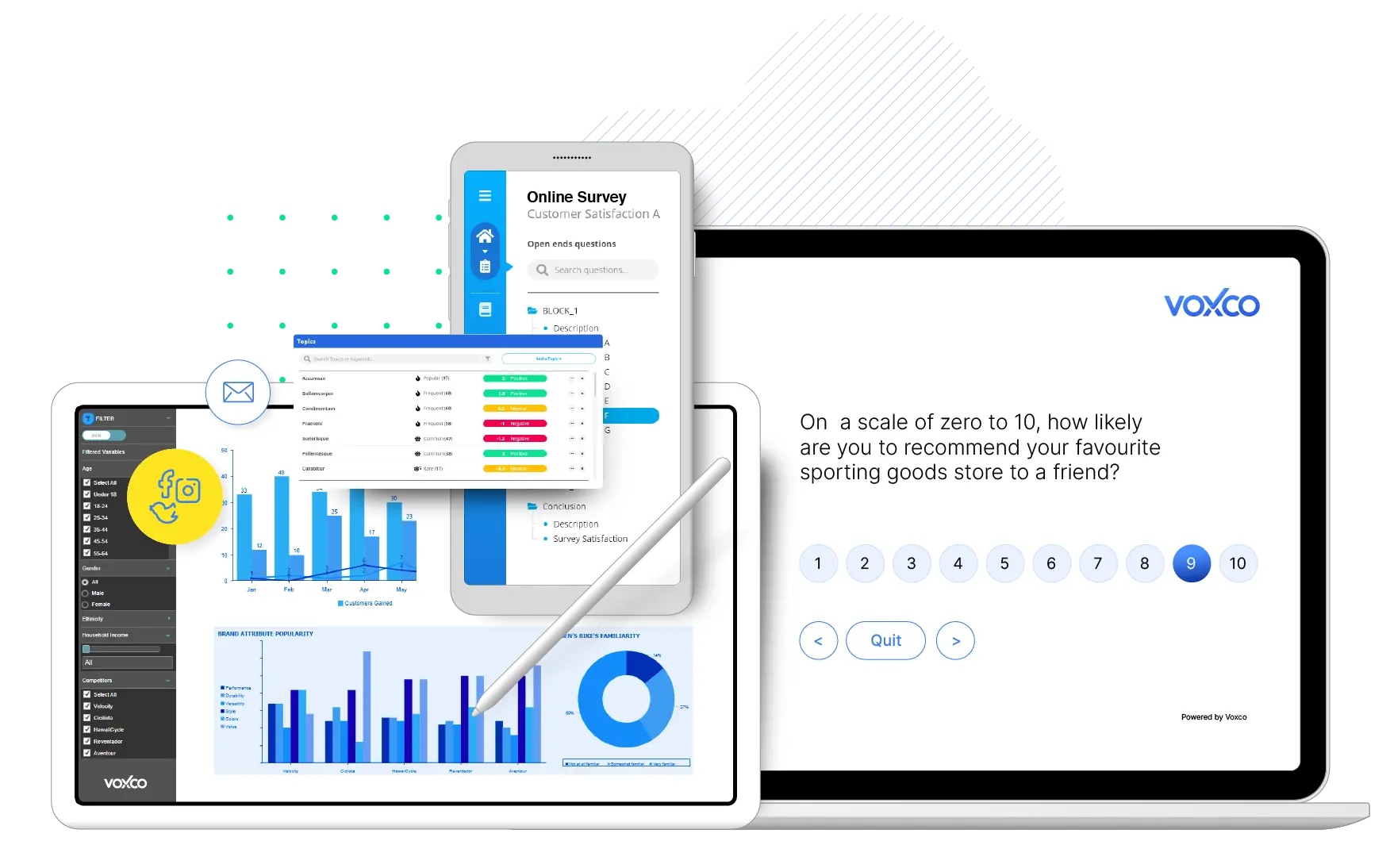
+ Omnichannel Survey Software
+ Online Survey Software
+ CATI Survey Software
+ IVR Survey Software
+ Market Research Tool
+ Customer Experience Tool
+ Product Experience Software
+ Enterprise Survey Software

COMMENTS
Advantages of Non-Experimental Research Non-experimental designs can open a number of advantageous research opportunities. The benefits include: Non-experimental research can be used to analyze events that have happened in the past. The versatility of the model can be used to observe many unique phenomena.
Some advantages of non-experimental research are: It is very flexible during the research process; The cause of the phenomenon is known, and the effect it has is investigated. ... As it can determine the cause, experimental research designs are used for research in medicine, biology, and social science. ...
Nonexperimental research, defined as any kind of quantitative or qualitative research that is not an experiment, is the predominate kind of research design used in the social sciences. How to unambiguously and correctly present the results of nonexperimental research, however, remains decidedly unclear and possibly detrimental to applied ...
Quantitative methods help researchers of different stripes gather data on a variety of subjects. Researchers must choose their methods carefully, however, as one type of quantitative method design may not suit all types of research. Some research requires a design which includes no applied treatment, experiment or ...
See how researchers use non-experimental research design in this multidisciplinary collection of open-access articles. Open Access Comparative Studies ... In conclusion, we briefly consider how our demonstration of some of the advantages of the set theoretic approach for modelling empirical relationships might be related to the debate ...
The research design is non-experimental. A non-experimental research design as defined by Reio (2016) is the predominant method researchers use in the social sciences. The design is useful when ...
Third, observational research is non-experimental because it focuses on making observations of behavior in a natural or laboratory setting without manipulating anything. Milgram's original obedience study was non-experimental in this way. He was primarily interested in the extent to which participants obeyed the researcher when he told them to shock the confederate and he observed all ...
Non-experimental studies have several advantages that make them useful for certain types of research. Some of the main benefits of non-experimental studies include: Greater flexibility : Non-experimental studies are often more flexible than experimental studies, as they do not require the researcher to manipulate variables or control for ...
Non-experimental research does not involve the manipulation of variables.; The aim of this research type is to explore the factors as they naturally occur.; This method is used when experimentation is not possible because of ethical or practical reasons.; Instead of creating a sample or participant group, the existing groups or natural thresholds are used during the research.
Meaning, unlike the experimental research design, non-experimental design does not progress on the grounds of independent variables, dependent variables or their cause-effect relationships. ... Advantages: Let us look at some characteristics of non-experimental design which makes it the best choice when it comes to researching (obviously only ...